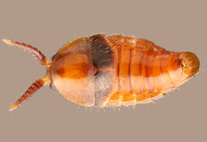Abstract
As the first record of the Cambodian termitophilous rove beetles, eight new species of the genus Discoxenus Wasmann, 1904 (Aleocharini: Compactopediina) are described, along with a redescription of the genus. Discoxenus katayamai Kanao & Maruyama, 2010, which was originally known from Thailand, is newly recorded from Cambodia and redescribed. Discoxenus species are morphologically divided into two species groups, namely the latiabdominalis and the assmuthi. The latiabdominalis species group includes D. latiabdominalis n. sp. and D. cambodiensis n. sp., and both species are associated with Odontotermes maesodensis Ahmad, 1965. The assmuthi species group comprises 11 species: D. assmuthi Wasmann, 1904, D. lepisma Wasmann, 1904, D. indicus Kistner, 1982, D. malaysiensis Kistner, 1982, D. phourini n. sp., D. kohkongensis n. sp., D. hirsutus n. sp., D. minutus n. sp., D. lucidus n. sp., D. kakizoei n. sp., and D. katayamai. The members in the assmuthi species group are associated with Odontotermes or Hypotermes termites. One of the unique morphological features of the assmuthi species group is the strongly developed distal crest of the male aedeagal median lobe while that observed in the latiabdominalis species group is not produced, which is general character state in the tribe Aleocharini. The character state of distal crest and several other morphological features such as mouthparts are considered to support the monophyly of respective species groups in Discoxenus.

